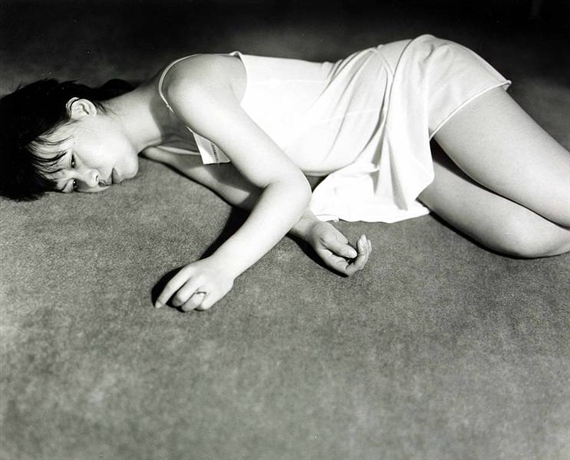The exhibition “
Nobuyoshi Araki. Silent Wishes” includes around 200 black & white photographs by the Japanese photographer. It shows the young, still-unknown Araki, juxtaposing those works with a new series from 2006. Acting like a bracket in a text, the calm, quiet pictures from the 1970s on the one hand, and the latest contemplative selection of works on the other, frame the renowned artist’s entire body of work: the eye takes in calm interiors, quiet scenes full of tender erotic tension, a domestic ambience and rows of houses, in a Tokyo beyond the hectic bustling of business. The heart of the exhibition is the intimate series “My Wife Yoko”, from the Museum der Moderne collection, describing and circling around the artist’s young wife on their honeymoon, in their own home, and on excursions nearby. This document of a young love is completed by a series of 12 photographs from 1989/1990, in which Araki accompanies his wife during her final illness: “Winter Journey” tells the touching story of saying farewell. Nobuyoshi Araki was born on 25 May 1940 in Tokyo, where he still lives and works. In 1967 he gets to know his future wife, Yoko Aoki, marrying her in 1971. Starting from his encounter with Yoko, his wife becomes the preferred model and motif for his photographic research. The documentation of their honeymoon becomes one of Araki’s most important photo series, appearing as a publication named “Sentimental Journey”. After the death of his wife Yoko, the horrifying experience of death flows more strongly into his works, expressing itself in scenes and motifs, which, underneath the surface, deal with the threat posed by death and violence. Araki considers the medium of the photo book to be the appropriate opportunity to disseminate and document his work in pictures. He has published hundreds of books, engaging with life in Tokyo and his completely personal view of his city and its environment; simultaneously he documents his relentless passion for photography, in a special way. However the centre-point of his work is the fascination with the erotic, with the other being called “Woman” and the ways in which this fascination becomes entangled in traditional and moralizing perceptions within society.




